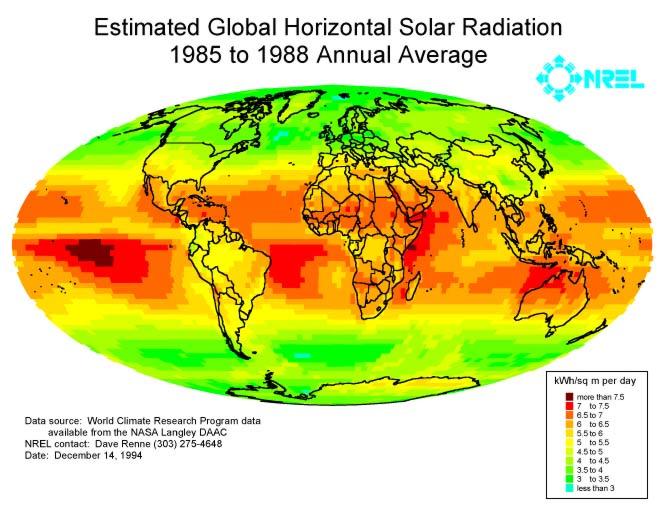
Where in the World.... ...can you use solar energy? You may think that solar energy only really works in hot places, where the sun is beaming down all the time. Wrong. In fact, there is enough "insolation" (a fancy word for how much solar energy reaches the surface) in most places in the world to generate substantial, usable electricity. With just 3 kilowatt-hours per square meter per day, a highly efficient photovoltaic array, and a properly-engineered battery system, a single-family home can get enough power to sustain most activities everywhere it's green, yellow, orange or red on the above map -- in other words, virtually anywhere in the world, even the frigid Antarctic. As Charles Gay, noted solar energy expert, says, "While the amount of annual sunlight which falls between the two arctic circles varies by as much as a factor of 3, solar cells have a self-compensating character so that the amount of electrical output varies by as little as 1/3 between bright, sunny areas and hazy, overcast locations." Naturally, the more red the map becomes, the stronger the insolation, and so the more you can do with solar energy in those locations. The bottom line: solar energy can benefit most people in the world. It's a matter of delivering the right equipment to the people who need it most, and identifying uses for the power that create economic benefits to justify the cost. That's what Greenstar makes possible. The first Greenstar installation was begun on the West Bank (Palestine) in December, 1998. Click here to see some economic and demographic details about the West Bank.